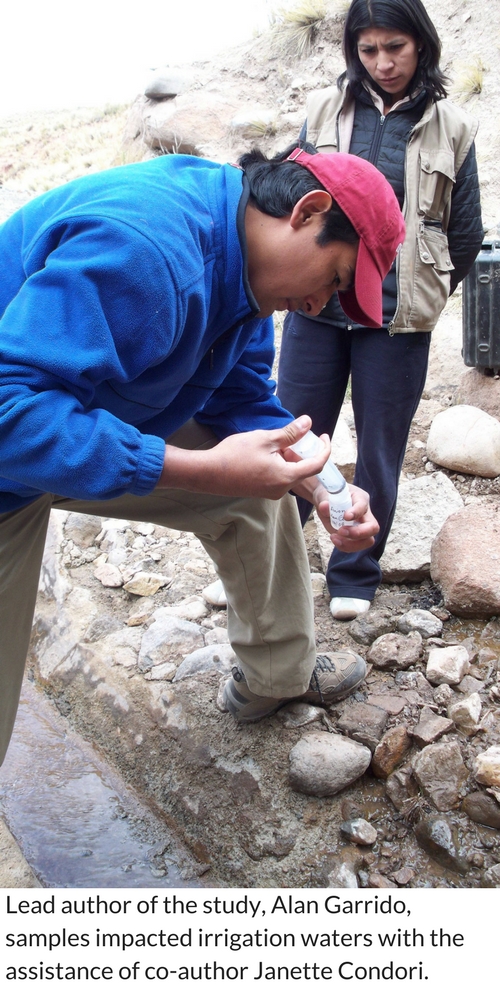New Research on Bolivian Mines
Loretto, Pennsylvania— Researchers from Saint Francis University, the University of Oklahoma, and Pennsylvania State University have found that exposure to trace metals from potatoes grown in soil irrigated with waters from the Potosi mining region in Bolivia may put residents at risk of non-cancer health illnesses. The world’s largest silver deposit lies in this region, and exposure to mining pollution from contaminated irrigation waters worries residents.
“In this high mountain desert, water is a critically precious resource and the use of metal-polluted waters for irrigation may have substantial detrimental impacts on the lives of subsistence farmers,” said William Strosnider, who is leading continued work at the site from Saint Francis University.

These findings are of concern given potatoes are the primary dietary staple in these communities. The lack of water for quality irrigation this arid region forces farmers to use contaminated waters, leading to health risks from contaminated potatoes eaten locally or shipped to outlying areas. For children, ingestion of arsenic through potatoes was 9.1 to 71.8 times higher than the minimum risk level and ingestion of cadmium was 3.0 to 31.5 times higher than the minimum risk level.
“The fact that the risk was so high through only one route of exposure is concerning,” said Robin Taylor Wilson, Penn State College of Medicine professor and lead epidemiologist for the study. “Children in this region are exposed to contaminants through routes other than potatoes. If we consider these additional routes of exposure, it is possible the potential risks could be higher, but without further research, there is no way of knowing how much higher these risks might be.”
The hazard quotient is the ratio of estimated specific exposure to a single chemical over a specified period to the estimated daily exposure level at which no adverse health effects are likely to occur. Hazard quotients about 1 suggest the possibility of adverse non-cancer health risks. The minimum risk levels are established by the U.S. Agency for Toxic Substances and Disease Registry.
“Our findings allow the research community insight into the potential human and environmental impact that vast active and abandoned mining operations may pose all across the high Andes,” said lead author Alan Garrido, of the Centro de Investigacion en Ciencias y Recursos GeoAgroAmbientales, CENIGAA (Neiva, Colombia).
This study was funded through a collaboration with Engineers in Action, a non-profit entity dedicated to improving the availability of low-cost high-impact engineering projects for clean water in developing countries. Engineers in Action is located in Tulsa, Oklahoma, and La Paz, Bolivia. The Center for Restoration of Ecosystems and Watersheds at the University of Oklahoma executed the study under the guidance of program Professor Robert Nairn.
A paper on this research titled, “Metal-contaminated potato crops and potential human health risk in Bolivian mining highlands,” has been published in the scientific journal, Environmental Geochemistry and Health, at doi: 10.1007/s10653-017-9943-4.